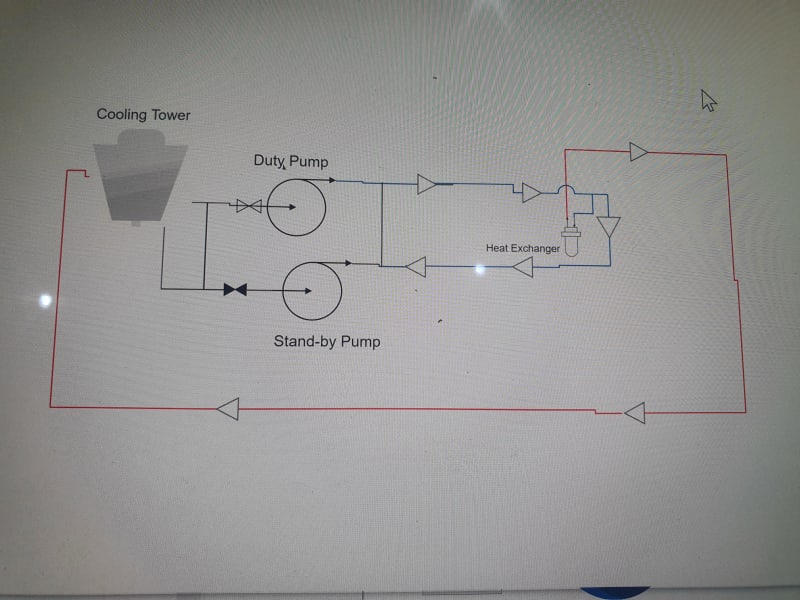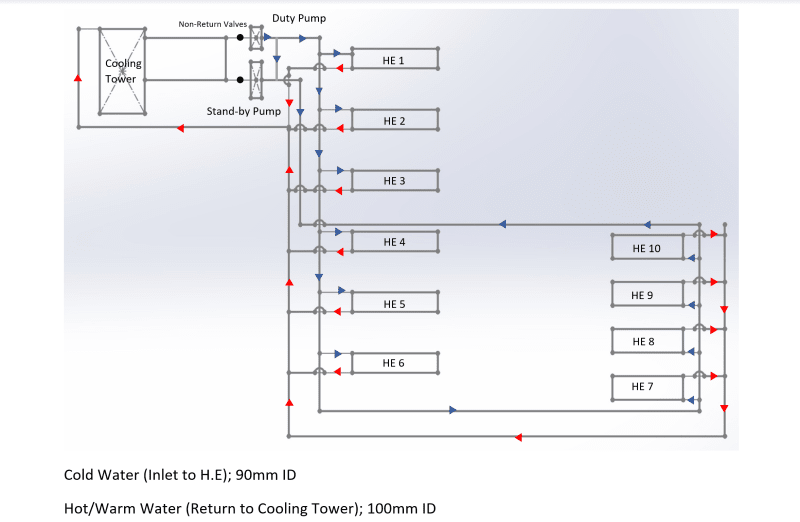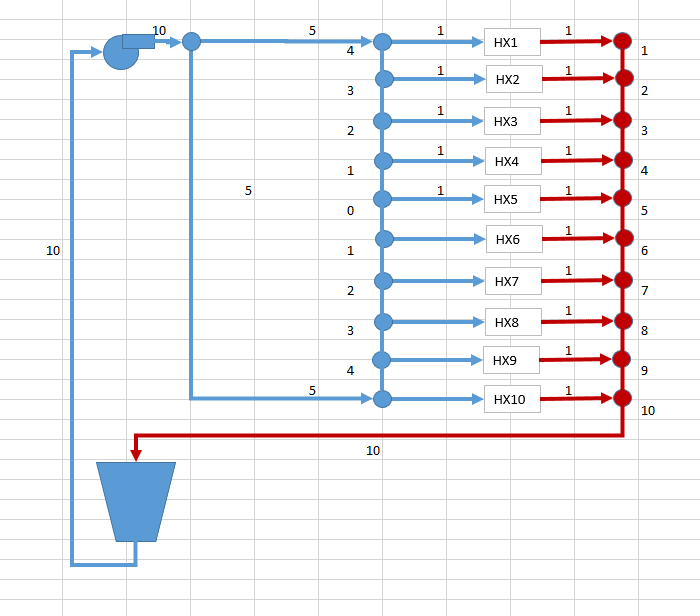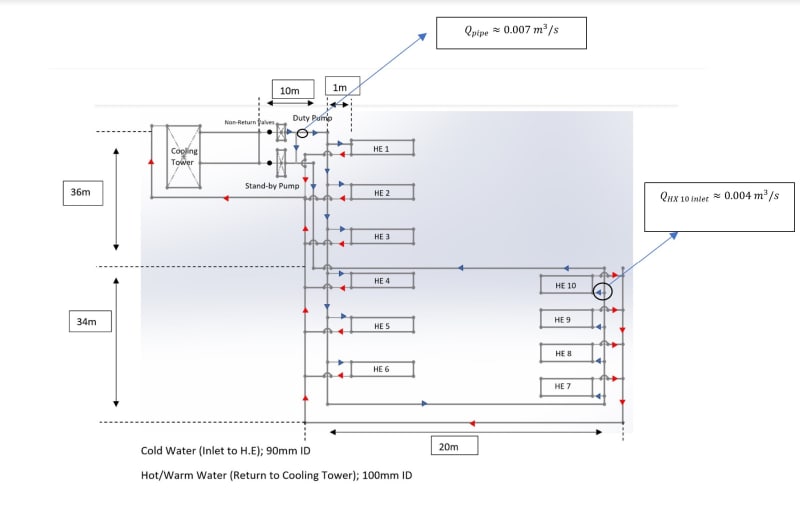Zaheer567
Mechanical
- Dec 13, 2021
- 16
Good evening
I need some assistance with a cooling system layout that utilizes a single cooling tower to cool oil via a heat exchange as well as to the moulds. The system functions with a pump that pumps water through a 90mm ID HDPE pipe that rings around the plant. At each machine, there are 2 outlets that go to the machines heat exchanger and the second goes to the mould for cooling of the product. The "hot/warm" water returns from both the heat exhanger and mould and leads into a main return line (header), that travels back to the cooling tower where it is cooled. I'm having some trouble understanding the pressure and flow rates within each branch. Further more, at the the last machine, the outlet pipe from the cooling tower (carrying cold water) RETURNS to the pump creating a ring.
I need some assistance with a cooling system layout that utilizes a single cooling tower to cool oil via a heat exchange as well as to the moulds. The system functions with a pump that pumps water through a 90mm ID HDPE pipe that rings around the plant. At each machine, there are 2 outlets that go to the machines heat exchanger and the second goes to the mould for cooling of the product. The "hot/warm" water returns from both the heat exhanger and mould and leads into a main return line (header), that travels back to the cooling tower where it is cooled. I'm having some trouble understanding the pressure and flow rates within each branch. Further more, at the the last machine, the outlet pipe from the cooling tower (carrying cold water) RETURNS to the pump creating a ring.





